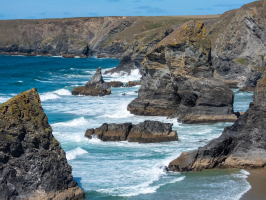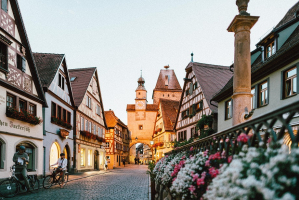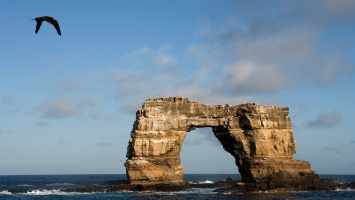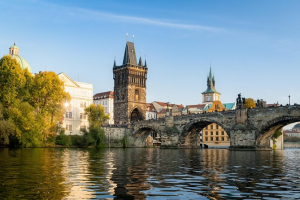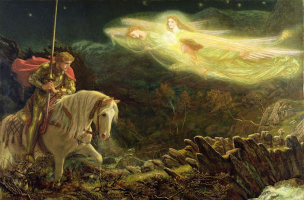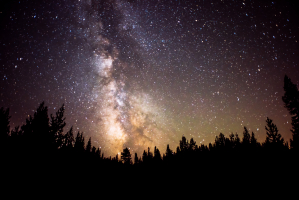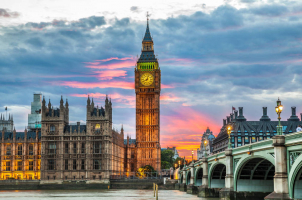Top 10 Protest Movements that Shook Britain
Britain has long been known as a country that has stood up to injustice. The major UK movements in the UK have concerned issues such as suffrage in the 19th ... read more...and early 20th centuries, parliamentary reform from the Chartists to the present day, poverty, salaries, working conditions, fuel costs, war, human rights, and so on. Here are the 10 major protest movements that shook Britain you should know.
-
The suffragette was a member of a women's activist organization in the early twentieth century that fought for the right to vote in public elections in the United Kingdom under the banner "Votes for Women." The term specifically refers to members of the British Women's Social and Political Union (WSPU), a women-only movement founded in 1903 by Emmeline Pankhurst that engaged in direct action and civil disobedience.
Pankhurst decided that women had to do the work themselves, and the WSPU's motto became deeds, not words. The suffragettes heckled politicians, attempted to storm parliament, were attacked and sexually assaulted by the police, chained themselves to railings, smashed windows, carried out a nationwide bombing and arson campaign, and faced public anger and ridicule. When World War I broke out in 1914, the suffragette cause was put on hold.
Following the war, the Representation of the People Act 1918 granted the right to vote to women over the age of 30 who met certain property requirements. Women obtained electoral equality with men ten years later, when the Representation of the People (Equal Franchise) Act 1928 granted all women the right to vote at the age of 21.
Date: 1903 -1914
Location: the United Kingdom
Purpose: Votes for women
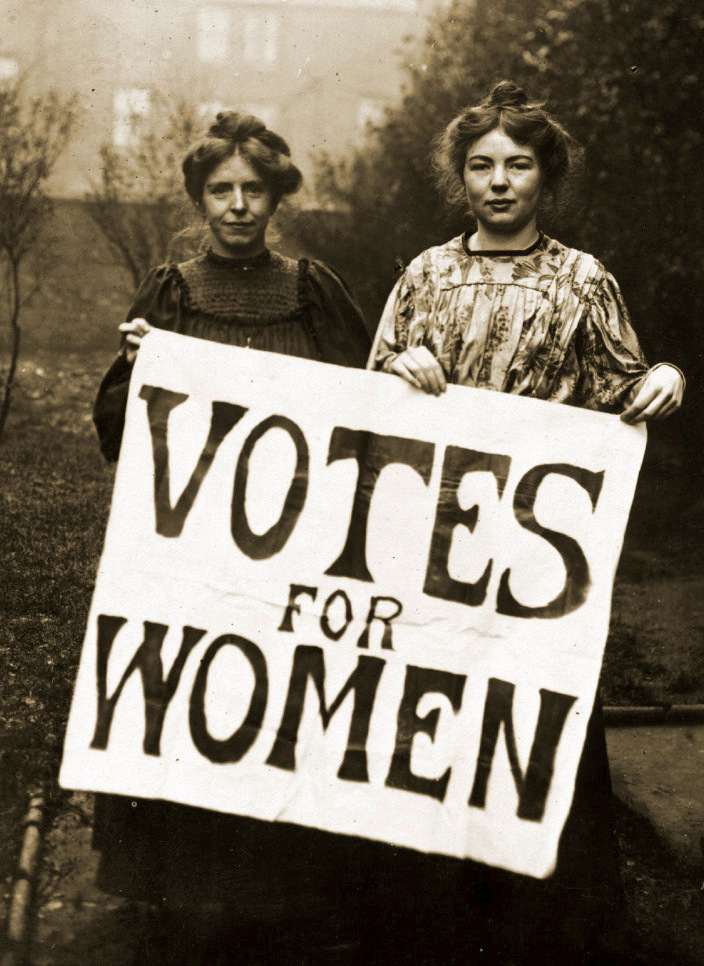
en.wikipedia.org 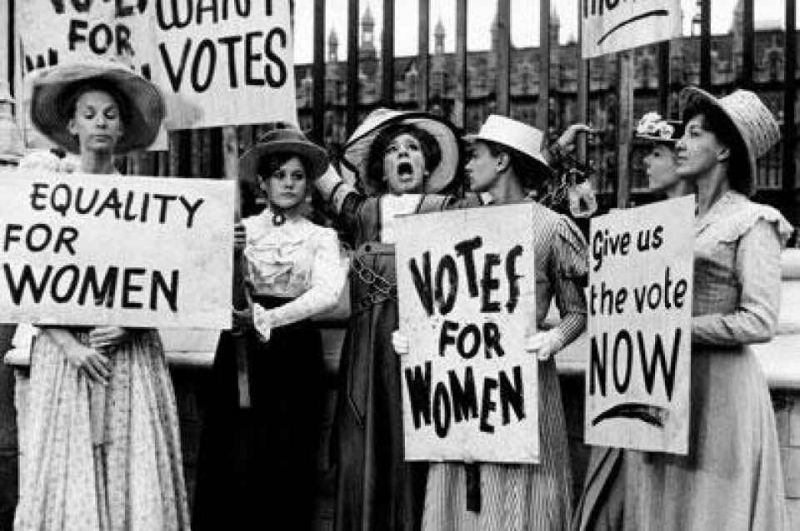
talktotucker.com -
The miners' strike of 1984-1985 was a major walkout in the British coal sector aimed at preventing colliery closures. It was spearheaded by National Union of Mineworkers (NUM) leader Arthur Scargill against the National Coal Board (NCB), a government institution. The Conservative administration of Prime Minister Margaret Thatcher, who intended to weaken trade union strength, led the opposition to the strike.
The year-long strike, which concluded in a decisive victory for the Conservative government and authorized the closure of most of Britain's collieries, was marked by violent clashes between flying pickets and police. According to many commentators, the strike was the most intense industrial dispute in British history. The walkout cost nearly 26 million person-days of labor, making it the greatest since the 1926 general strike.
In September 1984, the strike was declared illegal since no national ballot of NUM members was performed. It came to an end on March 3, 1985. Unable to afford to extend the strike, a considerable number of miners were obliged to return to work. Following mass pit closures, the coal mining industry saw a rapid downturn. Kellingley Colliery, the last deep coal mine in the United Kingdom, closed in December 2015.
Date: 6 March 1984 – 3 March 1985
Purpose: Prevention of pit closures
Result: Pit closures, job losses, political unrest
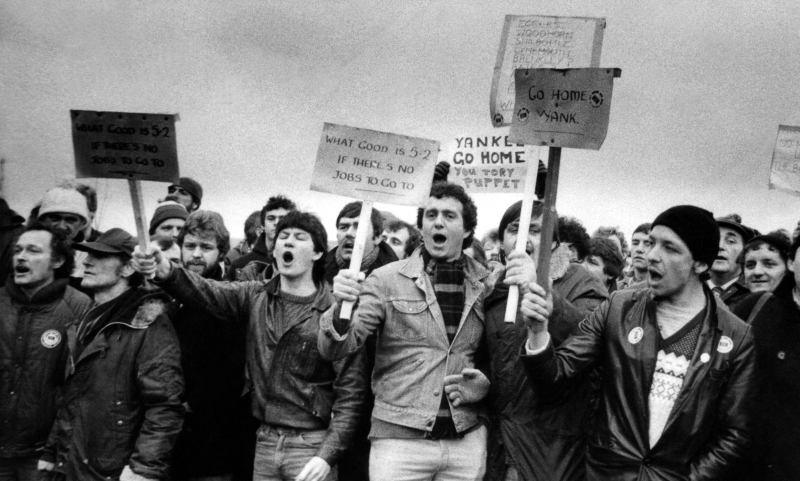
historyextra.com 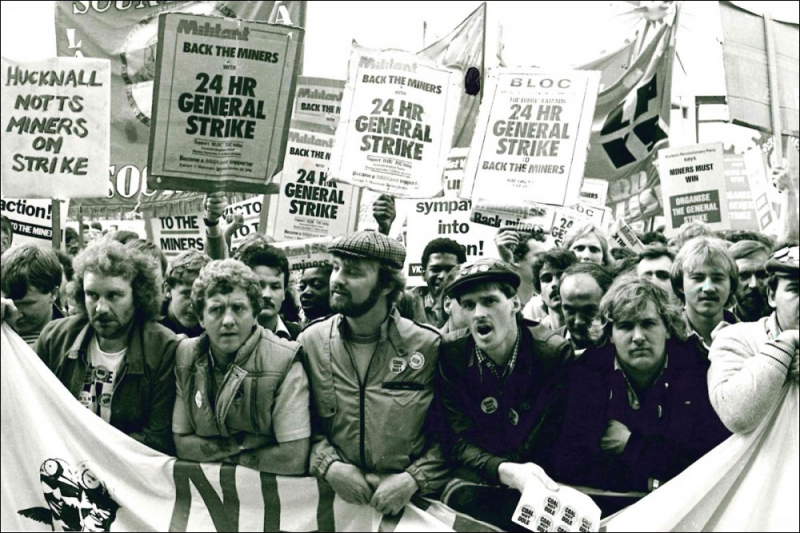
socialistparty.org.uk -
The Troubles were a 30-year ethnic-nationalist conflict in Northern Ireland that lasted from the late 1960s to 1998. It is also known worldwide as the Northern Ireland conflict and has been characterized as an "irregular war" or "low-level war" at times. The conflict began in the late 1960s and is generally thought to have ended with the 1998 Good Friday Agreement. Although the Troubles mostly occurred in Northern Ireland, violence occasionally spread to sections of the Republic of Ireland, England, and continental Europe.
It was a violent sectarian conflict in Northern Ireland from about 1968 to 1998 between overwhelmingly Protestant unionists (loyalists) who wanted the province to remain part of the United Kingdom and overwhelmingly Roman Catholic nationalists (republicans) who wanted Northern Ireland to become part of the Republic of Ireland. The British army, Royal Ulster Constabulary (RUC), and Ulster Defence Regiment (UDR; from 1992 called the Royal Irish Regiment) were the other major players in the conflict, and their avowed purpose was to play a peacekeeping role, most notably between the nationalist Irish Republican Army (IRA), which viewed the conflict as a guerrilla war for national independence, and the unionist paramilitary forces, which characterized the IRA's aggression as terrorism.
Despite its traditional classification as a "low-intensity conflict," the clash had the features of a civil war, with street combat, dramatic bombings, sniper strikes, barricades, and incarceration without trial. Before a peaceful solution involving the governments of both the United Kingdom and Ireland was effectively established in 1998, resulting in a power-sharing system in the Northern Ireland Assembly at Stormont, 3,600 people were killed and more than 30,000 were injured.
Date: 1960s–1998
Location: Northern Ireland, the Republic of Ireland, England, and mainland Europe
Result: Military stalemate, Good Friday Agreement, St Andrews Agreement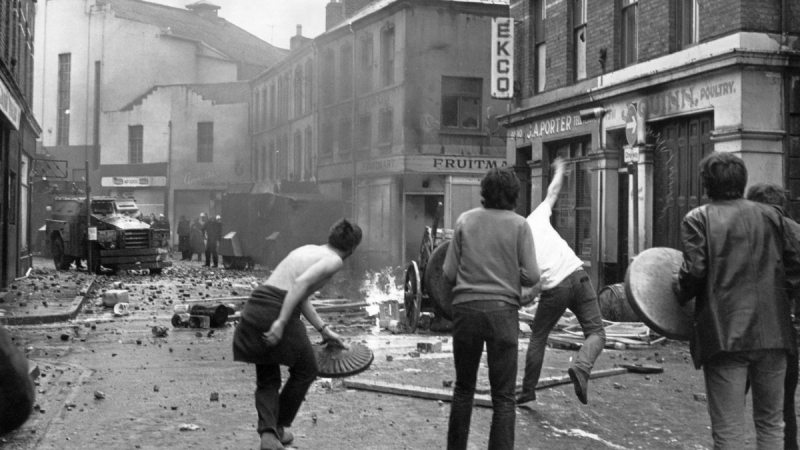
history.com 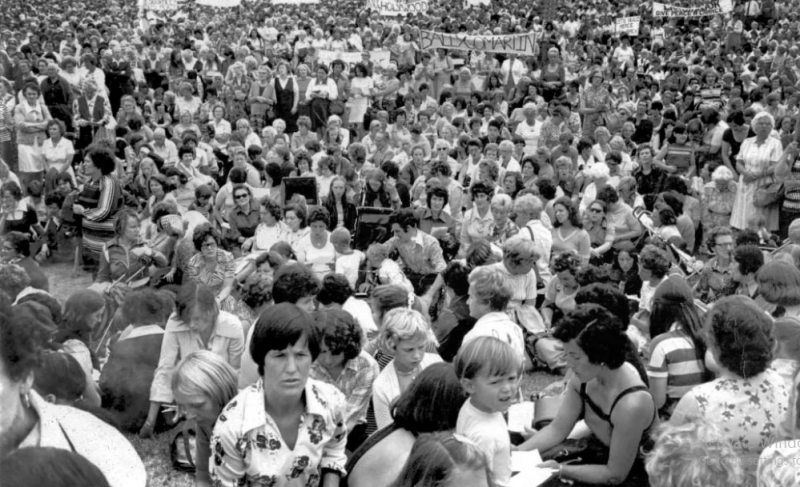
britannica.com -
The Peasants' Revolt, one of the most famous protest movements that shook Britain, was a peasant insurrection in England in 1381. It was the largest peasant insurrection in medieval England. The Peasants' Revolt is also known as Wat Tyler's Rebellion, after Wat Tyler, a local leader of the rebellion's peasants. It has also been referred to as the Great Rising.
Today, the causes of the insurrection remain unknown, however, there are some candidates: From 1347 to 1353, there was a massive outbreak of the Black Death. This resulted in fewer workers and economic concerns. Another factor is that the English crown raised taxes multiple times in a short period of time to support the Hundred Years' War. Or perhaps the central administration in London was ineffective at the time.
Academics have extensively researched the Peasants' Revolt. It was once thought to be a watershed moment in English history, but modern historians are less convinced about its impact on future social and economic history. The insurrection had a significant impact on the history of the Hundred Years' War by discouraging later Parliaments from raising extra taxes to fund military expeditions in France. The uprising has been widely exploited in socialist literature, particularly by author William Morris, and it continues to be a significant political symbol for the political left, shaping debates around the implementation of the Community Charge in the United Kingdom in the 1980s.Date: 30 May 1381 – November 1381
Location: EnglandResult: Suppression of revolt and execution of rebel leaders
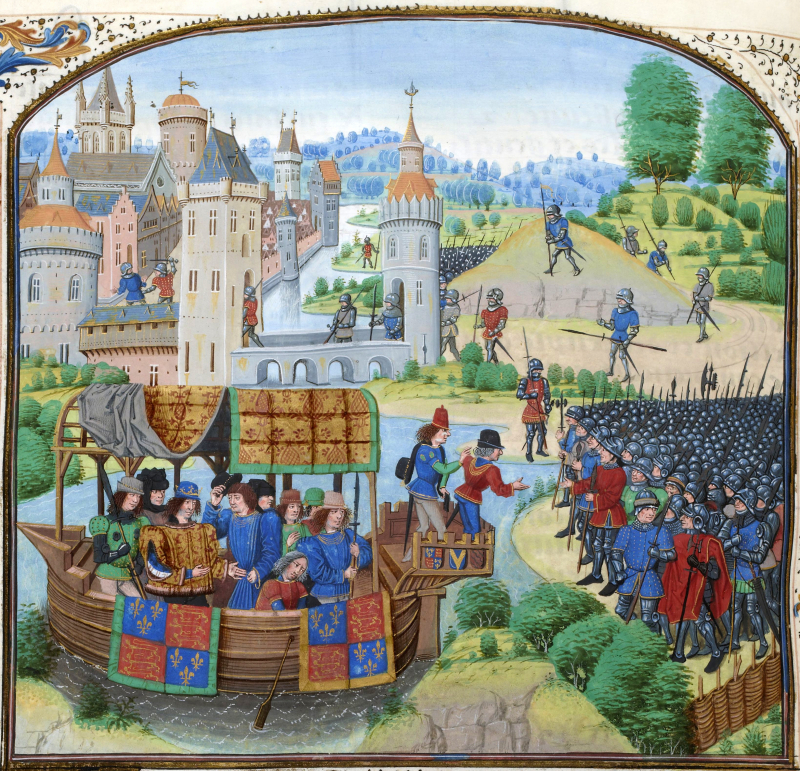
en.wikipedia.org 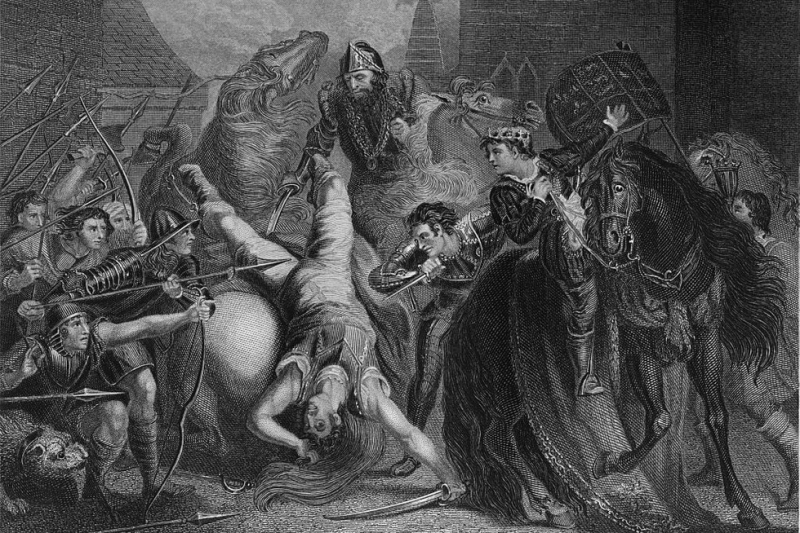
historyextra.com -
The 1981 Brixton riots, one of the most famous protest movements that shook Britain, occurred between 10 and 12 April 1981 in Brixton, London, and involved primarily black adolescents and the Metropolitan Police. It was the result of racist discrimination against the black community by the predominantly white police, particularly the increased use of stop-and-search in the area, as well as ongoing tensions resulting from the deaths of 13 black teenagers and young adults in the suspicious New Cross house fire that January.
According to the BBC, many black individuals in the country felt divided. There was significant unemployment, and racial tensions, and the country's black population had negative connections with the police in many places. Many young black people believed that police officers treated them unfairly and used the stop and search' statute as one method. Under this law, the police might stop and search anyone if they suspected them of planning to commit a crime. Many black rioters believed that they were being targeted for searches solely because of the color of their skin.
The main disturbance on 11 April, called "Bloody Saturday" by Time magazine, resulted in 279 police injuries and 45 public injuries; over a hundred cars were destroyed, including 56 police vehicles; almost 150 buildings were damaged, thirty of which were burned out, and numerous shops were looted. There were 82 people arrested. According to reports, up to 5,000 people were part. The Brixton incident was followed by disturbances in many other English cities and towns in July.
Date: 10–12 April 1981
Location: Brixton, South London, EnglandResult: injuring 279 police officers and 45 members of the public
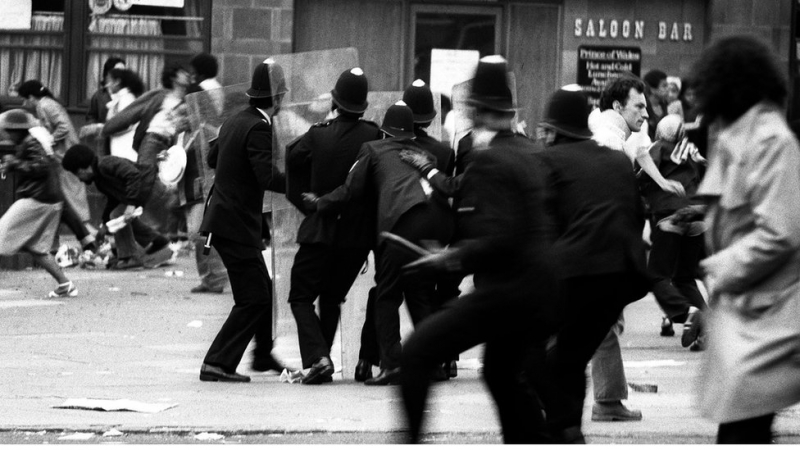
bbc.co.uk 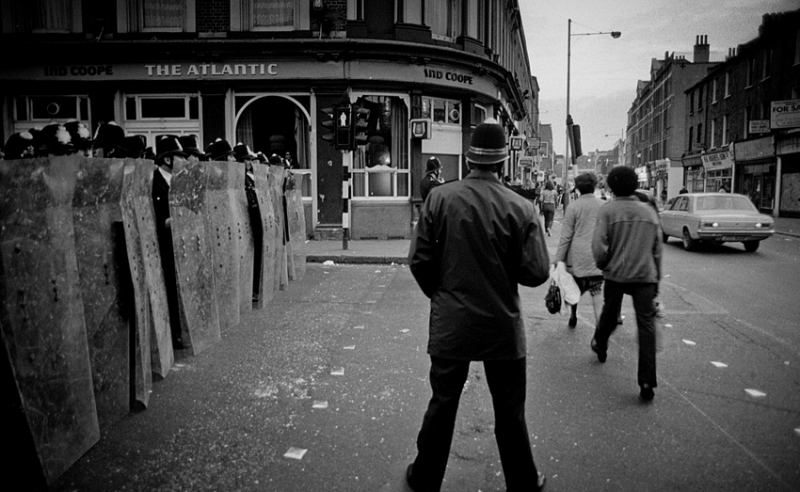
en.wikipedia.org -
The 2010 UK student protests were a series of demonstrations held around the country in November and December 2010, with central London serving as the focal point. The protests, which were mostly student-led, were organized in response to the Conservative-Liberal Democrat coalition government's projected spending cuts to further education and a rise in the tuition fee cap following their review of higher education financing in England.
The National Union of Students (NUS) and the University and College Union (UCU) together planned the first big demonstration on November 10th (UCU). Between 30,000 and 50,000 people marched through downtown London, with several hundred splitting off to attack and occupy the Conservative Party offices. A central London march was kettled in Whitehall, resulting in a violent clash with demonstrators. Further protests were conducted in downtown London on November 30, when police battled with protestors and kettled them in Trafalgar Square, while other protests were held across the country. Another central London protest occurred on December 9, the day the proposed amendments became law, with protestors battling with police and being kettled in Parliament Square.
The student protests were ineffective in blocking the government's policies. The demonstrations had been highly contentious in the United Kingdom, with both the establishment and protesters condemning them for instances of violence and vandalism. The Metropolitan Police's handling of the protests was also heavily condemned for suspected instances of deception and overuse of force.
Date: November and December 2010
Location: London
Purpose: opposition to planned spending cuts to further education and an increase of tuition fees
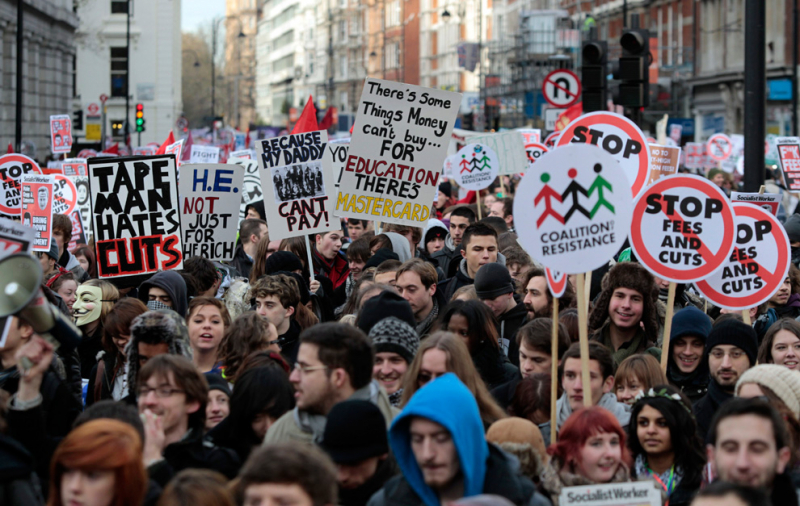
boston.com 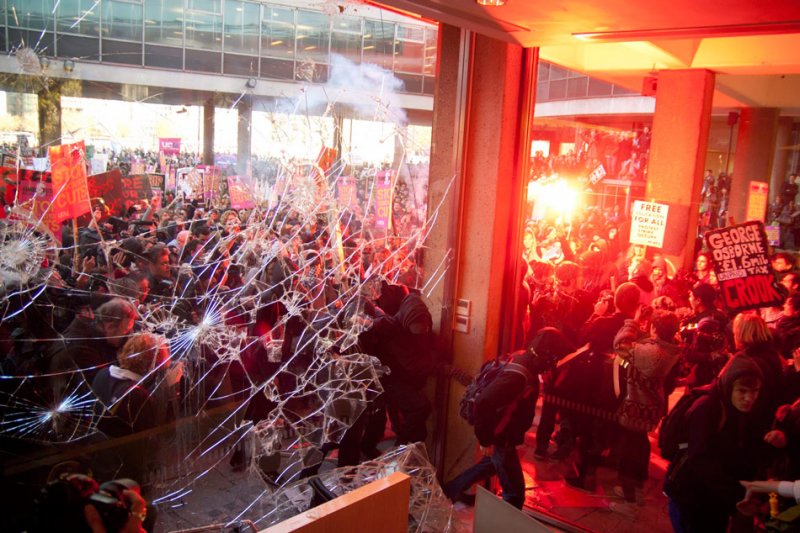
crimethinc.com -
Another famous protest movement that shook Britain is the 15 February 2003 anti-war protests. On February 15, 2003, a global day of protest was conducted in which individuals in over 600 places demonstrated their opposition to the impending Iraq War. It was part of a wave of protests and political events that began in 2002 and persisted throughout the invasion, war, and occupation. Social movement researchers called the day the largest protest event in human history.
According to BBC News, between six and ten million people protested in up to sixty nations over the weekend of February 15 and 16. The Stop the War Coalition (Stop) and the police agreed that the march would begin at two different locations: Thames Embankment for Londoners and those coming from the south, and Gower Street for those coming from the midlands and north. The two marches were supposed to meet in Piccadilly Circus and then proceed to a demonstration in Hyde Park.
According to the British Stop the War Coalition (Stop), the London protest was the largest political demonstration in the city's history. The police believed that around 750,000 people went, and the BBC claimed that about a million people attended. In addition to protests in England, the United Kingdom experienced demonstrations in Scotland. The Northern Ireland march took place in Belfast, with 10,000 (Guardian estimate) to 20,000 (SW estimate) people from across the sectarian divide taking part.
Date: February 15, 2003
Location: London, Scotland, Nothern Ireland
Purpose: opposition to the impending Iraq War
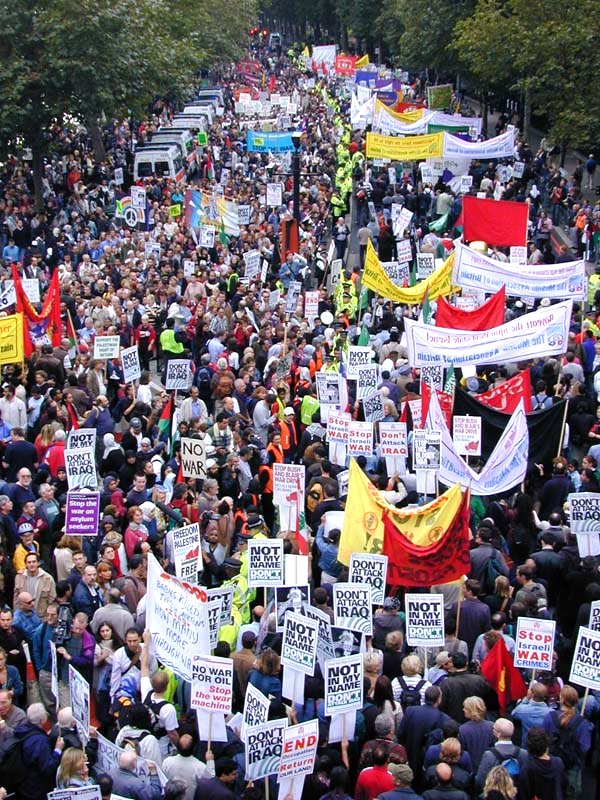
en.wikipedia.org 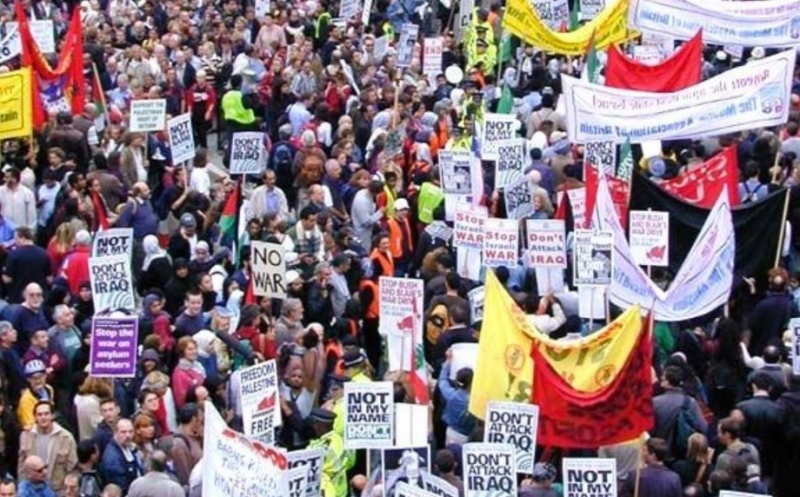
ips-dc.org -
The 1990 poll tax riots were a series of riots in British towns and cities in response to the Community Charge, which was implemented by Prime Minister Margaret Thatcher's Conservative government. The largest demonstration took place in central London on Saturday, March 31, 1990, just before the tax was set to go into effect in England and Wales.
According to the BBC, an anti-poll tax march in downtown London has erupted into the city's worst riots in a century. Among the 113 people injured are 45 police officers and 20 police horses. 340 individuals were detained, as cars were overturned and set alight in the heart of London's West End, popular with musical and theatergoers. Four tube stations have been closed for safety concerns as police attempt to clear the streets, and most of central London has been sealed off. Police have been pelted with bricks and cans by protesters. Firefighters attempting to put out the fires have been pelted with wood and stones. Restaurants have been forced to close early due to the violence, which has damaged shop windows and looted many businesses. According to eyewitnesses, there was a plume of black smoke above Trafalgar Square.
Date: 31 March 1990
Location: Trafalgar Square, London
Purpose: Abolition of the poll tax
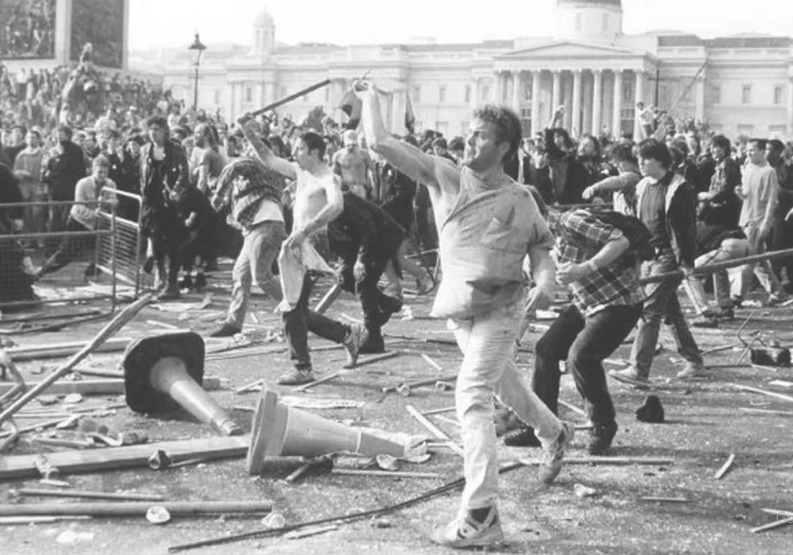
pasttenseblog.wordpress.com 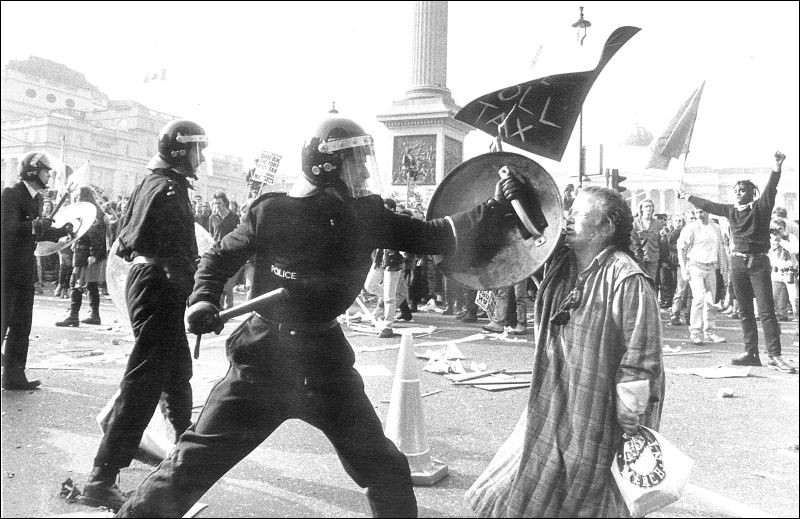
socialistparty.org.uk -
Chartism was a working-class political reform movement in the United Kingdom that exploded from 1838 to 1857, peaking in 1839, 1842, and 1848. It was a national protest movement with strongholds in Northern England, the East Midlands, the Staffordshire Potteries, the Black Country, and the South Wales Valleys. It drew its name from the People's Charter of 1838. The movement was aggressively opposed by government officials, who eventually crushed it.
When petitions signed by millions of working people were brought to the House of Commons, support for the cause was at its peak. The method utilized was to use the level of support displayed by these petitions and associated public assemblies to put pressure on politicians to provide manhood suffrage. Chartism thus relied on constitutional means to achieve its goals, while some became involved in the insurgency, particularly in South Wales and Yorkshire.
Six improvements were proposed in the People's Charter to make the political system more democratic. After Chartism fizzled out, Britain implemented five measures. Chartists regarded themselves as fighting against political corruption and for democracy in an industrial society, but they also drew support from outside of radical political groupings for economic reasons, such as resisting wage cuts and unemployment.
Date: 1838 to 1857
Location: the United Kingdom
Purpose: making the political system more democratic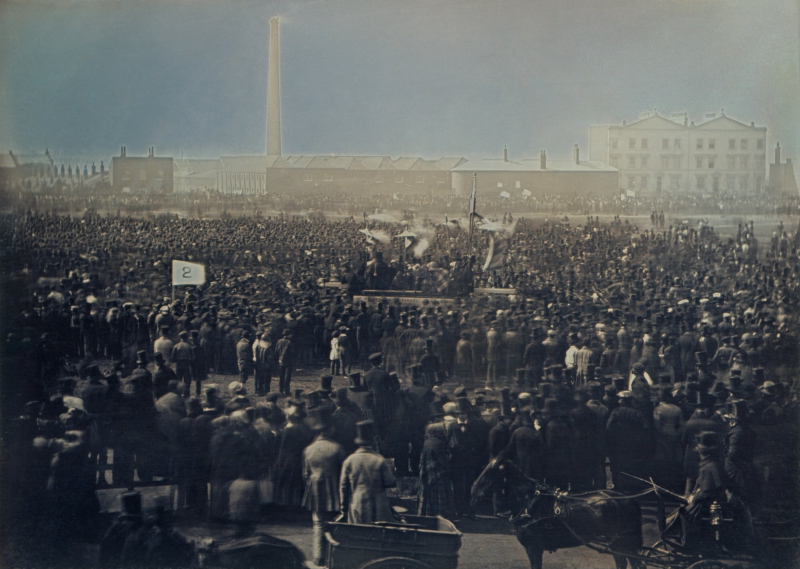
en.wikipedia.org 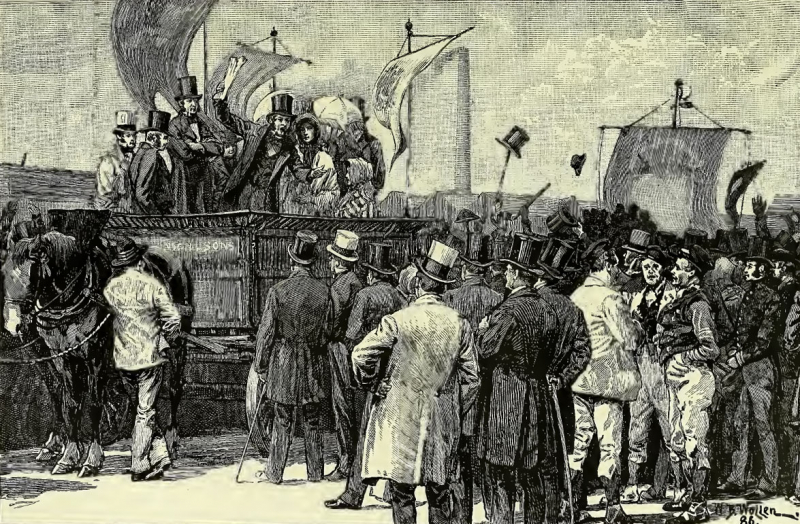
literaryocean.com -
The 1926 general strike, one of the most famous protest movements that shook Britain, lasted nine days, from May 4 to May 12, 1926. The General Council of the Trades Union Congress (TUC) convened it in an unsuccessful attempt to compel the British government to intervene to avert wage cuts and worsening circumstances for 1.2 million locked-out coal miners. This became one of the greatest industrial disputes in British history, with millions of people taking part in the nine-day strike, demonstrating workers' unity and solidarity. 1.7 million people were laid off, primarily in transportation and heavy industry. The administration was well prepared and solicited the help of middle-class volunteers to keep key services running. There was little bloodshed, and the TUC was defeated.
The General Strike's defeat was a disaster for trade unionism and working people. The verdict was exploited by the government to enact harsh new anti-union legislation. The Trade Disputes and Trade Union Act of 1927 prohibited sympathy strikes and limited them to the trade or sector in question. It made unions liable for legal damages and restricted the ability to picket. It condemned the use of union funding for political purposes and prohibited civil personnel from joining unions with political objectives. For the first time since 1916, membership fell below five million. The strike depleted union funds, leaving them ill-equipped to fight back. Employers took advantage of union weakness as unemployment soared.
Date: 4-12 May 1926
Location: the United Kingdom
Purpose: Higher wages and improved working conditions
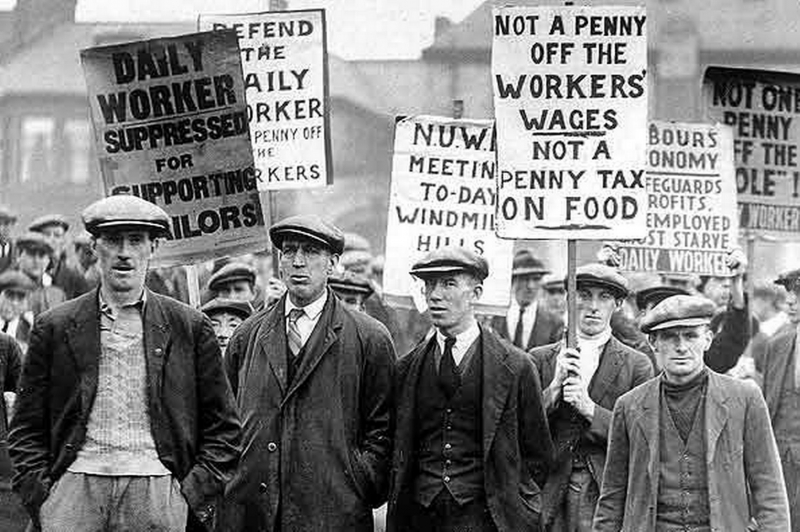
marxist.com 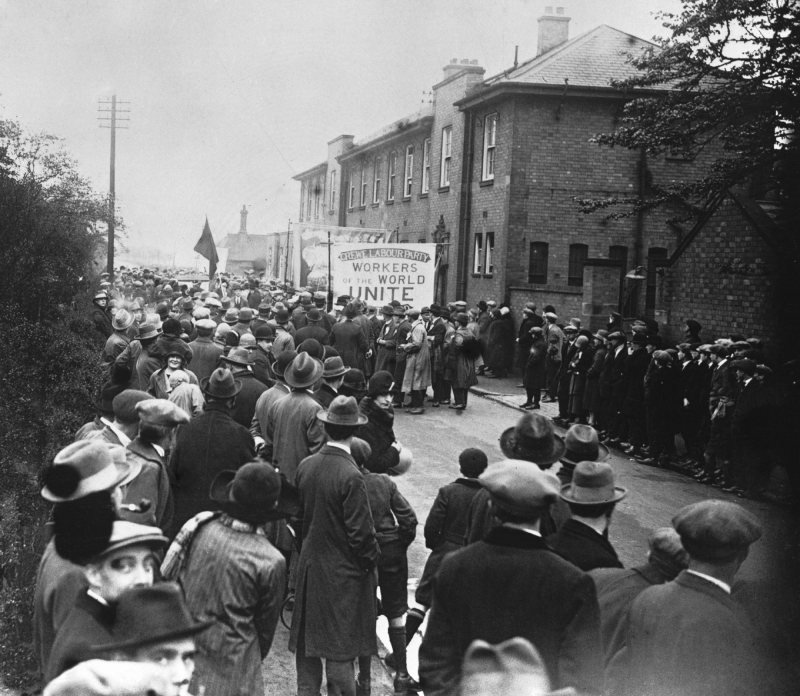
bl.uk












